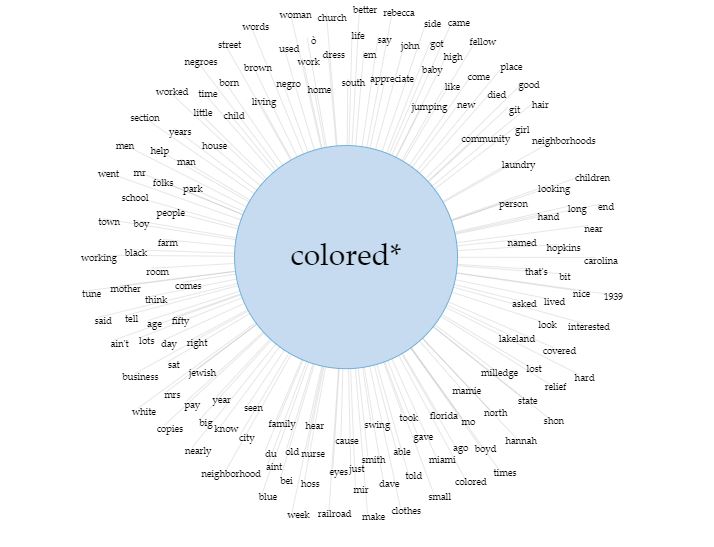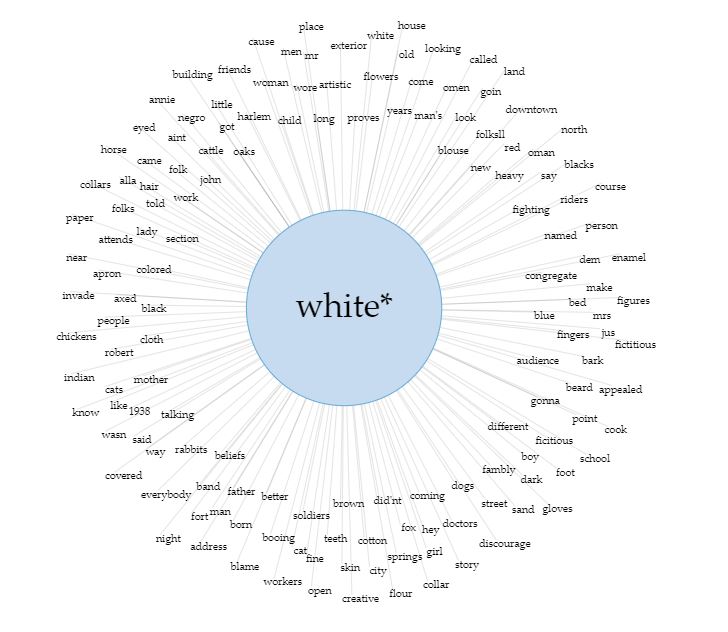My historical question focused on how the Federal Writer’s Project depicted the experience and culture of African Americans during the 1930s. How did the Federal Writers Project depict African Americans? I did not go into this assignment with any specific ideas regarding the question, but I had two possible trains of thoughts. Both depended on the interview subjects that were chosen as part of the Federal Writer Project. I thought that non-white subjects would discuss a more realistic view of African Americans, with a focus on the specific hardships that were endured. I thought that white subjects may have a different depiction. They may focus more on the cultural and folk contributions of African Americans at the time. Especially regarding the construction of identity in the Southern United States, I thought that there could be a great deal of disparity, with some sources focusing on the dialect and culture, with others discussing the continued oppression experienced by African Americans1 .
Together, the ideas and depictions provided by the different interview subjects would start to build a fuller picture regarding depictions of African Americans in the United States during this time.
For the sources that I contributed to the class’s corpus, I searched for interviews that discussed famous African Americans of the period, such as Langston Hughes, Louis Armstrong, and Jesse Owens. Based on previous readings, I understood the role that culture, escapism, and transportation played during the Great Depression2. It was likely that many of these people may choose to speak about some of the iconic figures of the day as opposed to the negatives of their own life.
I was particularly drawn to the visualization tools that linked and emphasized particular words within the corpus. For example, the word cloud option provided a practical overview of some of the more common themes present within the texts.

However, this tool is just an overview, and doesn’t show any connections between particular ideas or themes, which is a necessity for my question. So, I used the link tool to observe the common words associated with words such as “negro,” “black,” and “colored.” With the use of these three terms in conjunction, I was able to see some of the more interesting concepts associated with African Americans in the time period.



Many of the links focused on locations, of where different people were centered. While there were links to folklore, culture, and dialect as I expected, I was surprised to see a connection to workers, audience, and the like. With links to the word black, I received the adjective as opposed to the ethnicity, but I was surprised some of the negative and derogatory terms attached to it, such as the n-word, “sonofabitch,” and “bastard.” Without further close reading, its unclear whether these instances are individuals describing the words that were used against them, or something else.
For reference, I also looked at the links for “white,” in an attempt to better understand how white people were better depicted in the project.

I thought it was interested to see the tone of words that were associated with white people, such as “appealed,” “discouraged,” “creatives,” and “friends.” The role of white people in the interviews appears different than African Americans.
The tools helped me to determine that there were a number of ways that African Americans were depicted in the Federal Writers Project. They were shown as audience members, hard workers, mothers, fathers, and children, in addition to bastards or other derogatory terms. This is likely in line with how people of color existed in the 1930s. While they attempted to continue their existence during the economic downturn, they were still faced with prejudice and racist attitudes.
